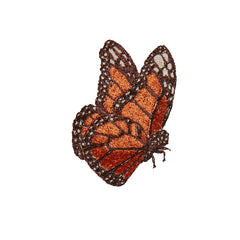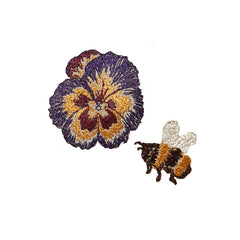
Jasmine of Black Girls with Garden, Photo by Natalie Allgyer.
Plan & Prepare
The first step to starting your own garden is to make a plan! Jasmine writes, “It’s imperative that you plan your garden out! You don’t have to know everything but you do need to have an idea of what you want to do.” She suggests using a journal to write down your thoughts and to ask yourself what it is you want to grow and think through the what, where, how, and when for getting your garden started.
To learn how to answer these questions and start your gardening journal head to the BGWG blog.
Start!
Once you’ve planned your garden it’s time to start planting which begins with soil. Jasmine suggests the following soil mixture: topsoil, compost, and worm casting. She also notes that it’s best to purchase these items from local, independently owned nurseries. “This ensures and gives you the opportunity to ask if ingredients are of good quality and organic. Also, it tends to be more affordable this way.”, writes Jasmine
Starting your garden is also the time to add trellises as needed and to refer to the information you journaled in step one, Plan & Prepare.
Maintain
The third step is to ensure your garden thrives by maintaining your plants with organic pest control, utilizing compost as a fertilizer, and harvesting your plants when the time is right! Remember to also ENJOY your garden. Jasmine writes, “Take lots of pictures and document your garden in a journal. Learning what works for you and your garden is the absolute fun part.”

Image courtesy of BGWG
Read more about starting your own garden on the BGWG website along with gardening tips and shopping guides including 5 Black Owned Seed Companies to Try and How to Prepare an Old Garden.

Gardening Resources
Pollinator.org has pollinator friendly planting guides for your region. Enter your zipcode to find out which plants are best for the bees, butterflies and birds in your area. We also previously shared on the blog a few tips for protecting pollinators, check it out here!
Try finding a helpful list of DIY pesticides to use in your garden. Synthetic pesticides wreck havoc on ecosystems and are harmful to insects, animals and the environment.
If you don’t have a space for an outdoor garden, start growing indoors with some beautiful house plants! BGWG has a great list of Black owned plant stores to order plants from online. Skip the schlep and have these leafy wonders delivered directly to your door.

More About Black Girls With Gardens
BGWG is a collective dedicated to providing inspiration and resources to women of color interested in gardening. Their mission states, “Everything we do is dedicated towards helping our community, Black women in particular navigate their relationship with plants. In turn we hope to help food apartheid areas, eradicate food injustice, help women heal with plants, and reconnect with the land.” Learn more about BGWG here and consider donating directly to their efforts.
Get informed about food apartheid in the United States, we recommend Nina Sevilla’s NRDC article “Food Apartheid: Racialized Access to Healthy Affordable Food”. Food insecurity has significantly increased in the last year due to the COVID-19 pandemic and will continue to hit communities in food apartheid areas, even as wealthier communities begin to see a return to normalcy. Consider volunteering for your local food bank or using your own garden for good and become a food bank gardener.


















